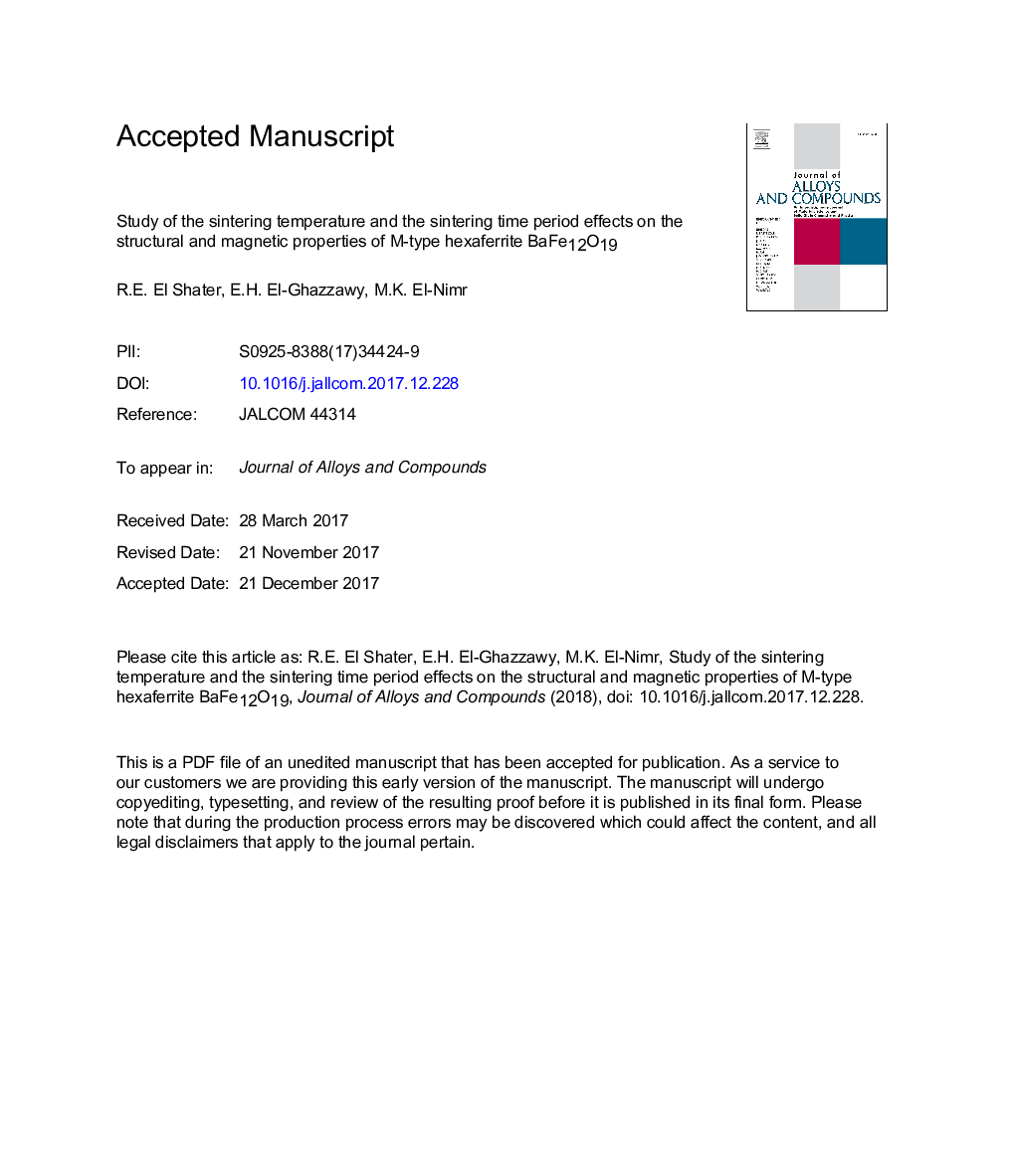| Article ID | Journal | Published Year | Pages | File Type |
|---|---|---|---|---|
| 7993935 | Journal of Alloys and Compounds | 2018 | 31 Pages |
Abstract
The hexagonal ferrite BaFe12O19 (BaM) has been prepared by the citrate precursor method. The synthesized sample has been sintered at 1000, 1100 and 1200â¯Â°C for 24â¯h and 1300â¯Â°C for 62, 124 and 148â¯h to examine the effect of both sintering temperature and sintering duration on the structure and the magnetism of BaM. So these samples have been characterized by XRD, FT-IR, VSM, SEM and TEM techniques. The XRD and SEM images show that increasing sintering temperature has enhanced the purity and crystallinity of the samples with grain growth from 0.537â¯Î¼m to 16.35â¯Î¼m. In addition, the single crystal has been formed into the sample 1300â¯Â°C/62â¯h. On the other hand, the crystallinity deterioration has occurred with increasing sintering period and a barium oxide phase (BaO) has appeared. The IR spectra show three fundamental absorption bands ν1, ν2 and ν3 of hexagonal ferrite corresponding to tetrahedral and octahedral complexes. The intensity of the absorption bands increases by improving the crystallinity which resulting from the sintering process. From the VSM measurements, the maximum recorded magnetization values (Mm), the remnant magnetization (Mr), the squareness ratio Mr/Mm and the coercivity (Hc) of the samples have been recorded. As a result of grain growth, the transformation of the single domain to the multi-domain structure occurs. This can be supported by noticing the reduction of Hc values with grain growth.
Keywords
Related Topics
Physical Sciences and Engineering
Materials Science
Metals and Alloys
Authors
R.E. El Shater, E.H. El-Ghazzawy, M.K. El-Nimr,
